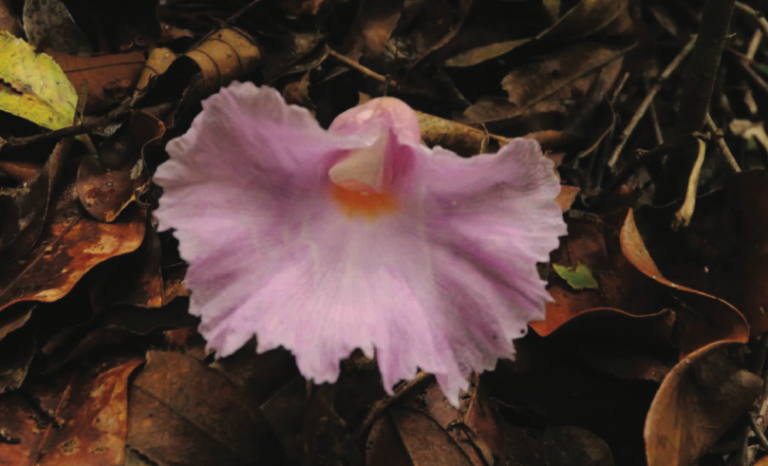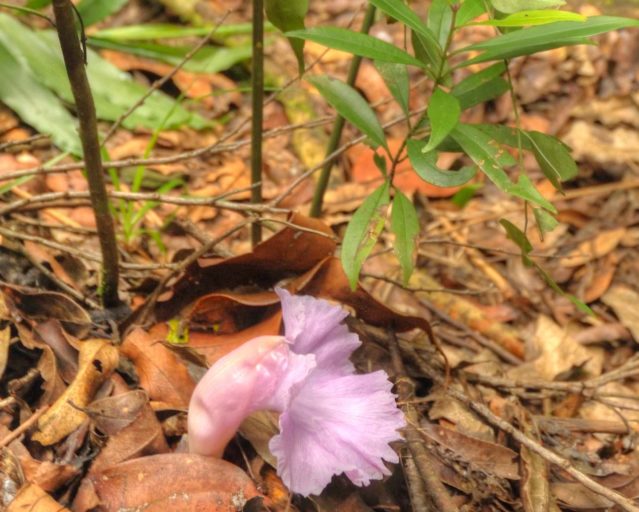- Scientists have named the new ginger plant Aframomum ngamikkense after the proposed Ngamikka National Park in the Misotshi-Kabogo Massif.
- The species is currently known only from forests at higher elevations of 1,500-2000 meters, where the plant occurs in large patches.
- This discovery adds to the growing list of 50-odd known species of ginger found throughout Africa including Madagascar.
In a remote mountainous rainforest in the Democratic Republic of the Congo (DRC), scientists have discovered a new species of wild ginger.
The newly described plant — discovered on the Misotshi-Kabogo Massif located in the Albertine rift — is currently known only from forests at elevations of 1,500-2,000 meters, where it occurs in large patches. It is locally abundant, and can be seen flowering at the peak of the rainy season from October to November, researchers report in a new study published in the journal Phytotaxa.

Scientists from the Wildlife Conservation Society (WCS) first chanced upon the ginger plant during a field survey in the Misotshi-Kabogo Massif (formerly called Kabobo) in 2007.
The rugged massif comprises of a chain of largely-unexplored mountains lying along the western shore of Lake Tanganyika, the world’s longest freshwater lake bordering the DRC, Burundi, Tanzania, and Zambia. Decades of civil unrest in the region had restricted scientific exploration until recently.
Now, researchers are undertaking expeditions that are uncovering species, some of which are new to science. These include four species of mammals, a bird and three plants, known only from these forests. In fact, the Misotshi-Kabogo Massif has been identified as an area of high endemism — a landscape with several species unique to that region.
The team from WCS has named the new species Aframomum ngamikkense “after the proposed Ngamikka National Park in the Misotshi-Kabogo Massif.” The plant adds to the growing list of 54 known species of ginger found throughout Africa including Madagascar, and is the fourth species of wild ginger to be discovered in the Albertine Rift.
“While mountains are known to encourage speciation, it is uncommon to find so many unique species at one site, particularly when we have only made biodiversity surveys over a period of about four months,” Andrew Plumptre, WCS Senior Scientist, said in a statement.
The forests of Kabobo are still largely intact, but as DRC emerges from conflict, people are moving in from other provinces, resulting in deforestation for agriculture and human settlements.
In December last year, the governor of Taganyika Province approved the boundaries of the 1,477-square-kilometer (570-square-mile) Kabobo Natural Reserve. This reserve, together with the adjoining Ngandja and Luama Katanga Reserves, protects nearly 7,000 square kilometers of critical wild habitat.
“Findings of yet more unique species demonstrate the need to make both Kabobo and Ngandja Provincial Reserves as National Reserves,” said Richard Tshombe, DRC Country Director.

Citation:
- Fischer E, et al (2017) A new species of Aframomum (Zingiberaceae) from D.R. Congo. Phytotaxa. 298 (3): 277–282. https://doi.org/10.11646/phytotaxa.298.3.7